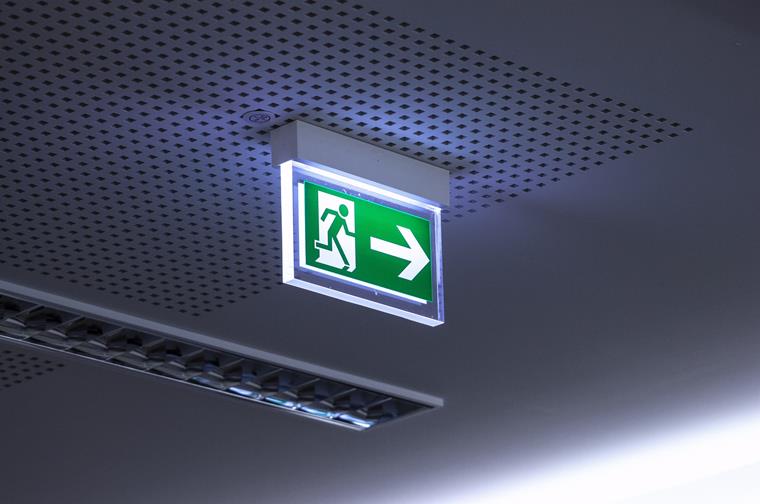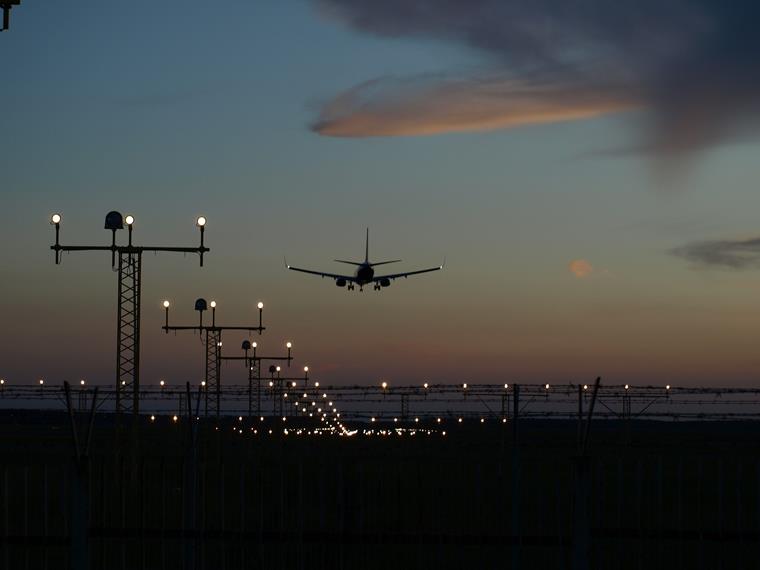If you want to learn more about the fire and its consequences, check out the full podcast episode here. You can also find our sources there:
#032 Fire Disaster at Düsseldorf Airport
Düsseldorf Airport
In an earlier episode, we talked about inadequate fire protection at BER. This time, it's all about the worst fire disaster at a German airport: The accident at Düsseldorf Airport in 1996.
In terms of traffic, it is the third-largest airport in Germany, after Frankfurt am Main and Munich, as well as the most important main traffic hub for the state of North Rhine-Westphalia. As of 2021, it was used by around 80 airlines with over 230 destinations in 65 countries. It also has the largest tower in Germany, with a height of about 285 feet.
What Happened
As has become clear in previous episodes, disasters don't just happen. They are mostly based on concatenations of several errors.
The 11th of April, 1996, was a relatively quiet day at the airport. There are vacationers, employees, and two welders from a Dortmund company. They start work around 1 p.m. An expansion joint on the driveway above a flower shop is supposed to be worked on – actually a routine task. Nevertheless, a fatal error occurs unintentionally here: It is likely that hot bitumen is dripping onto the suspended ceiling. Visitors to the flower shop notice a strange smell, but they are reassured.
At 3:31 p.m., a taxi driver contacts the airport fire department, because he saw a spark on the ceiling. Two firefighters and an electrician arrive. They still suspect a faulty electrical system. They notice that the welder's work is not registered.
In the meantime, a smoldering fire develops unnoticed in the suspended ceiling. This is incomplete combustion with insufficient oxygen supply and thus the low combustion temperature. This does not result in a real fire, but mainly smoke. The building material slowly chars.
At 3:50 p.m., the heat buildup becomes so strong that the oxygen in the air reaches maximum saturation and the cavity fails. It comes to a flashover. The entire ceiling, with a width of 250 m, is on fire.
Flashover is the term used to describe the transition of a fire from onset to a full fire when exceeding the critical temperature level. The fire spreads suddenly. This process happens very quickly and is extremely dangerous. Flashovers are the leading cause of death for firefighters on the job.
Fires can be divided into two phases:
a) Initial Fire:
This includes the ignition phase with the ignition source. Flammable materials, such as styrofoam in this case, are likely to ignite as a result of the welding work. This then leads to the smoldering fire phase, during which the fire heats up to a certain limit temperature.
b) Fully Developed Fire:
The flashover is followed by the full fire phase. All flammable substances burn with a gradually increasing temperature until the maximum is reached. After the entire fire load has burned down, the cooling phase begins.
At the airport, people notice a large, black cloud of smoke in Terminal A that is spreading rapidly. At this point, there are still around 2,000 people in the building. A loudspeaker announcement will prompt them to leave the building. Panic breaks out as everyone tries to escape the stinging smoke.
The emergency services of the taxi driver are alerted, and they are now given the task of organizing as many firefighters as possible. The already difficult firefighting is complicated by the fact that many of the firefighters are not familiar with the airport building. The emergency services cannot advance to the arrival level until 4:30 p.m.
Calls for help come from the Air France Lounge: The lounge does not have an emergency exit. However, the on-site airport employees do not know exactly where it is. The process is made even more difficult due to the dense smoke.
Elevators also prove to be a dangerous source of error: they go straight to the arrivals hall. As the doors open, the deadly smoke hits the passengers.
In fire disasters, people usually die as a result of smoke inhalation and suffocation. The smoke contains respiratory toxins, such as carbon monoxide. This quickly leads to unconsciousness, and toxic pulmonary edema may arise.
Four hours later, the fire at the airport was brought under control. Thousands of rescue workers from all over North Rhine-Westphalia were on duty. A provisional first-aid facility has been set up on the runway.
In this disaster, 17 people died and 88 others were seriously injured. A French guest managed to escape the Air France lounge by smashing a window and jumping out. He was very seriously injured, but paramedics were on the site immediately. Another businessman survived in a lounge bathroom and was the last person to be saved from the fire.
How did the accident come about?
As is so often the case, this catastrophe was a chain of mistakes and unfortunate circumstances. The welders did not comply with the regulations, did not prepare their job properly, and did not register the work. Normally, a firefighter should have been there.
The terminal opened in 1977. A fire protection concept, as is common today, did not really exist at the time. There were also fatal errors in the choice of material: In order to save costs, quickly combustible material was used in the insulation of the suspended ceiling, which promoted the spread of the fire. The stiffening of the ventilation systems also contributed to the rapid expansion. The air conditioning also contributed to the spread of smoke, so that it also reached areas that were not actually affected.
There were no sprinkler systems, no fire doors, and, as mentioned, no escape routes from the Air France lounge. Due to the different radio frequencies of the fire brigades, most of the emergency services arrived very late. Furthermore, no building plans were available for non-resident firefighters.
Process
The fire caused damage of around one billion marks. The trial began in December 1999. However, it was very slow and much went wrong.
A total of nine people were charged, including architects, managers, welders, and fire safety officers. After five and a half years, however, the process was terminated prematurely.
It turned out after eight months that a lay judge was an alcoholic. Another lay judge was charged with arson in a different context. The court cast had to be reorganized for a new trial. Therefore, after 89 days, the trial was terminated prematurely without anyone being convicted. In total, the defendants only had to pay between 6,000 and 40,000 marks, depending on their income. None of the defendants had a criminal record or acted willfully. If the process had been continued, the costs would have exploded, which by then had already amounted to three million marks.
One expert came to the conclusion that if the fire had been detected 20 minutes earlier and the elevators had been switched off, the entire hall could have been evacuated more quickly. Then, probably nobody would have been harmed.
Consequences of Disaster
After the reconstruction of Düsseldorf Airport, it is considered one of the safest in the world. About one billion marks were invested, 30% of which went into fire protection. A memorial room was built at the airport for the victims of the accident.
In order to ward off and prevent disasters like this, fire safety is extremely important. In Germany, there are the following protection goals: Protection against fire and smoke, rescue of people and animals, and effective extinguishing work. A distinction is made between preventive and defensive fire protection. Defensive fire protection includes all measures that are carried out when there is already a fire; for example, by the fire brigade and the use of sprinkler systems. During the airport reconstruction, special attention was paid to preventive fire protection. This prevents the fire from spreading. These include structural fire protection with escape routes, the choice of the right building materials, and so on, and organizational fire protection with alarm and fire fighting plans, for example.
A modern fire alarm system was installed at the airport. There are also almost 15,000 optical smoke and heat detectors and over 80 manual push-button alarms. A professional smoke extraction system is automatically controlled by the fire alarm system, as are the elevators, which go to a safe floor after a fire is reported, and can no longer be used. The best possible escape route concept ensures safety, as do a sprinkler system, fire doors, and appropriate staff training.
This is only a small glimpse into the multitude of measures that have made Düsseldorf Airport so safe after its reconstruction. In terms of the fire protection concept, many lessons were learned from the disaster. In general, fire protection in Germany has now been optimized in such a way that accidents like this are prevented and, hopefully, are completely a thing of the past.


